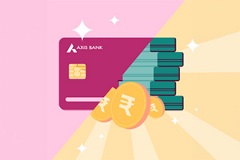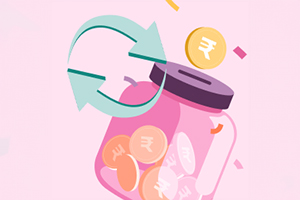Introduction
You may consider taking out a Personal Loan or Overdraft when you need money to cover unexpected expenses or pay for a major purchase. While both options provide access to funds, they are not the same.
Personal Loans and Bank Overdrafts have different eligibility criteria, approval processes, interest rates and repayment policies. You can use an EMI calculator for Personal Loans to estimate the amount needed to repay the loan within a specific tenure.
Understanding the basic differences between Personal Loans and Overdraft
1. Loan amount:
Personal loan: The loan amount is predetermined and paid to you in a lump sum.
Overdraft: It is a line of credit that allows you to withdraw money up to a certain limit as and when you need it.
2. Repayment:
Personal loan: You must repay the loan amount in fixed monthly instalments, which can be spread over months or years, depending on the loan term.
Overdraft: There is no fixed repayment term for overdrafts. You can repay the amount borrowed in full or in part at any time as long as you do not exceed the credit limit.
3. Interest rate:
Personal loan: The personal loan interest rate is fixed.
Overdraft: You are only charged interest on the amount borrowed and not on the entire credit limit.
Eligibility and approval:
Personal loan: It requires a good credit score, a stable income, and a low debt-to-income ratio. The approval process for a personal loan can take anywhere from a few hours to several days, depending on the lender.
Overdraft: It requires a good credit score and a stable income. The approval process for a bank overdraft is usually faster than for a personal loan, and you may be able to access the funds immediately.
Uses and benefits of Personal Loans and Overdrafts
Personal Loan:
1. It is ideal for large expenses, such as home renovations, medical bills or debt consolidation.
2. You can access a lump sum and pay it back over a period.
When to choose a personal loan?
1. If you have a specific expense in mind and need to borrow a large sum of money.
2. If you want to consolidate high-interest debt.
Overdraft:
1. It is ideal for managing cash flow or covering unexpected expenses, such as car repairs or medical bills.
2. If you have access to a line of credit, you can borrow from it as needed.
When to choose an overdraft?
1. You need to borrow a small amount of money for a short period.
2. You want a flexible borrowing option with easy access to funds.
Axis Bank personal loans have fast loan processing. Axis Bank offers personal loans from ₹50,000 to ₹40,00,000 with less paperwork and speedy processing. You can use the EMI calculator to determine personal loan interest rates and personal loan eligibility.
Also Read: [ When should you avail of a Personal Loan?]
Summing Up
Personal loans and bank overdrafts are different borrowing options with separate eligibility criteria, approval processes, interest rates, and repayment policies. It's crucial to compare the costs and risks of both options and choose the one that best meets your needs and financial situation.
Disclaimer: This article is for information purpose only. The views expressed in this article are personal and do not necessarily constitute the views of Axis Bank Ltd. and its employees. Axis Bank Ltd. and/or the author shall not be responsible for any direct / indirect loss or liability incurred by the reader for taking any financial decisions based on the contents and information. Please consult your financial advisor before making any financial decision







